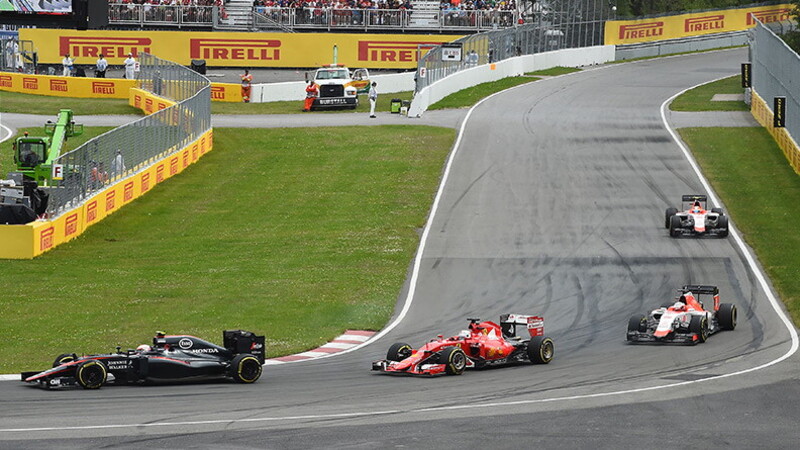Canada dry

Leaving aside the myth that is Gilles Villeneuve – of whom more is written elsewhere – and the 1997 title won by his son Jacques, the largely Francophile American nation has actually always loved grands prix and speed since the second half of the 1960s.
The fever originated no doubt from the United States, where grands prix had been on the bill since Formula 1® was first created, with the legendary Indy 500 valid for the F1® championship (as well as for Indycar) right up until 1960. But it was only as the 1960s went on, with the United States Grand Prix taking place at Watkins Glen north of New York, that the growing crowd of fans from the other side of the Canadian border began to make it clear that they wanted a grand prix of their own.

Mosport was Canada's key into F1®: a fairly straightforward choice. The circuit, situated in Ontario north of Bowmanville, had been there since the 1950s. The centenary of Canada's existence as an independent state provided the excuse needed to carry out some work on the track, which in 1967 hosted Canada's Formula 1® debut. Mosport was quite a short and fast lap with little in the way of safety and yet it still managed to host eight Canadian grands prix. The two most famous races had an important role to play in deciding the championship outcome: in 1974 with a win for Emerson Fittipaldi, who lifted the title just two weeks later in the United States following a long battle with Ferrari (firstly against Niki Lauda and then against Clay Regazzoni). After that, there was 1976 when a resurgent James Hunt won Mosport and then did exactly the same at the United States Grand Prix, putting him in the perfect position to claim the title during his epic showdown against Lauda and Ferrari (again) under the legendary downpour that was Fuji in Japan.
Mosport's F1® career came to an end in 1977 after a decade of heroic racing that had often been characterised by bad weather. During that decade, the Canadian Grand Prix had also visited Mont Tremblant: a circuit that fired drivers up and down hills and through forests, clinging to the side of the mountain that gave the venue its name. The two rounds held there, run in 1968 and 1970, were won respectively by Denny Hulme in a McLaren and Jacky Ickx in a Ferrari.

The fact that these two races ran at all were largely down to the initiative of local hotelier Leo Samson, who invested a small fortune to help bring Formula 1® to Mount Tremblant but didn't know how to defend the circuit against criticism of its poor safety standards. And it was this that led to Mount Tremblant's disappearance from the F1® calendar, and then eventually from international racing entirely. And yet it was very much Mount Tremblant that had whetted the general public's appetite for motorsport in Quebec.
Once that wooded circuit, about 100 kilometres north of Montreal, was gone from the calendar, Canada's powerbrokers understood immediately just how much Formula 1® was worth to them. At the time, work was already underway in Montreal to host the 1976 summer Olympic Games. A grand prix would be a brilliant way to follow it up.
The Montreal debut finally came in October 1978, and what happened on that day has already been recounted a thousand times as Gilles Villeneuve claimed his first F1® victory.
Nearly 40 years later, the race that takes place on Sunday 10 June will actually be the 39th grand prix held on the Ile Notre Dame, just beyond Montreal's city centre. And the unknown factors will be just the same as they have always been: three straights where the drivers hit more than 300kph, heavy braking, but no corners that can be considered truly fast. There is one double corner though that is truly symbolic. The tricky chicane near the pit entry has pulled a trick or two even on the most experienced drivers, introducing them at high speed to a concrete wall that is emblazoned with the beautifully ironic slogan of:“Bienvenue au Québec.”
Call it Canada dry humour.




